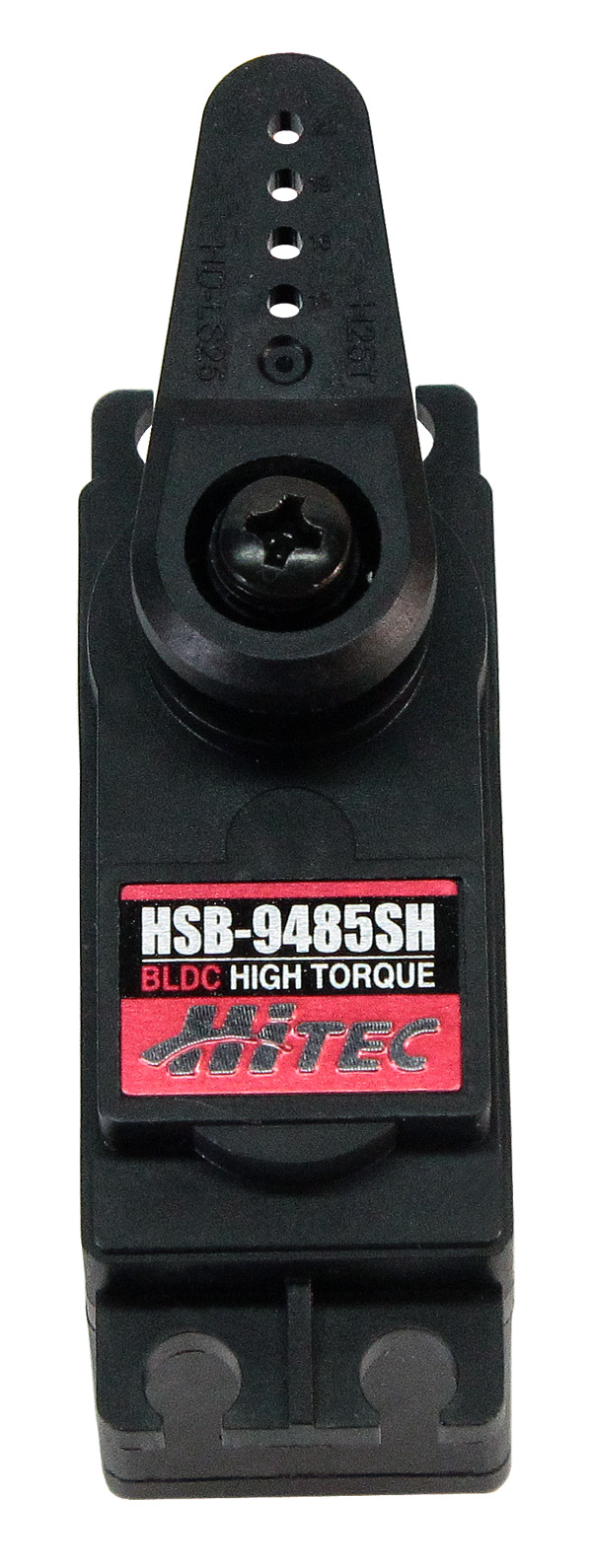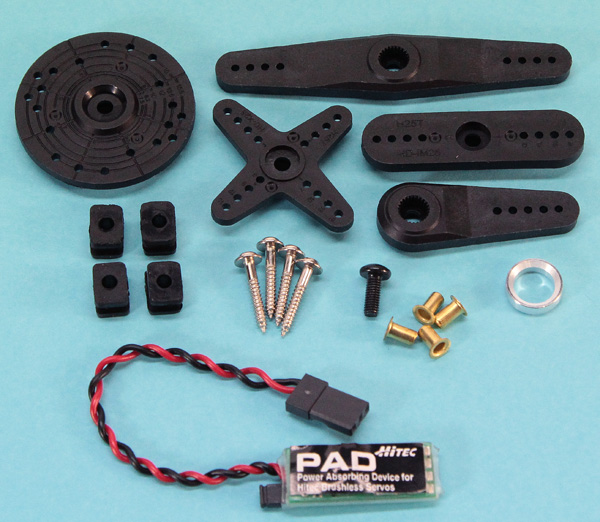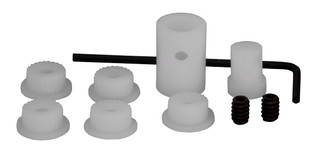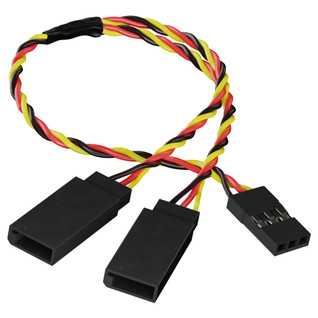HSB-9485SH Servo
How Far Will This Servo Rotate?
The answer to this question is partially dependent on what you are using to control the servo.
Click for a quick video explanation.
Stock:
With an Average Radio System:
67°
Your average transmitter and receiver will output a relatively narrow PWM signal range.
Radio System + Travel Tuner:
120°
Adding a Servo Travel Tuner to your radio system setup will allow you to achieve wide PWM signal ranges.
Wide Signal Controllers:
120°
Controllers such as the Servo Commander, Arduinos, and Raspberry Pi servo hats can usually send a wide signal.
Reprogrammed:
Whether you purchase the reprogrammed option or get a servo programmer and do it yourself, a reprogrammed version of this servo will be able to achieve greater travel than it can in stock form.
With an Average Radio System:
114°
Your average transmitter and receiver will output a relatively narrow PWM signal range.
Radio System + Travel Tuner:
203°
Adding a Servo Travel Tuner to your radio system setup will allow you to achieve wide PWM signal ranges.
Wide Signal Controllers:
203°
Controllers such as the Servo Commander, Arduinos, and Raspberry Pi servo hats can usually send a wide signal.
Special Features
- Constant torque output: Revolutionary circuit and motor designs allow the HSB-9XXX Series servos to maintain their speed in a more consistent manner, regardless of load.
- Hybrid MPD 1st Gear: Unique ultra-durable Metal/Plastic/duralumin hybrid first gear prevents inadvertent electrical noise from affecting other components within your aircraft or vehicle
- Custom NeuMotor: Designed by Steve Neu exclusively for the HSB-9XXX Series, these high performance, brushless motors provide long-standing durability and performance.
Brushless Advantages
- At least FIVE TIMES longer-lasting than brushed servos.
- 30% faster response times.
- Greater resistance to jolts and vibration.
- Smoother operation.
- Same power consumption as brushed digital servos.
- Same compact case size as standard servos.
- Exceptionally durable geartrain.
- Smooth dual ball bearings
PLEASE NOTE
While compatible with most radio control devices, the regenerative braking feature of the HSB-93XX series servos may cause a problem if the device cannot accept a backflow of current. The types of devices that cannot accept this backflow are: Voltage Regulators, Power Safe Receivers and certain BEC circuits whether stand alone or integrated within an Electronic Speed Control. Check with the manufacturer or the Hitec website for a list of compatible models. If your device cannot accept a current backflow, then you must install a PAD (Power Absorbing Device - Hitec PN# 55756) as described in the manual. A PAD is included with every Hitec brushless servo.
Specs
| Output Shaft Style | H25T Spline |
|---|---|
| Voltage Range | 6.0V - 7.4V |
| No-Load Speed (7.4V) | 0.15 sec/60° |
| No-Load Speed (6.0V) | 0.18 sec/60° |
| Stall Torque (6.0V) | 361 oz-in (26 kg.cm) |
| Stall Torque (7.4V) | 361 oz-in (26 kg.cm) |
| Max PWM Signal Range | 700-2300μsec |
| Travel per µs (Stock) | .075°/μsec |
| Max Rotation (Stock) | 120° |
| Pulse Amplitude | 3-5V |
| Operating Temperature | -20°C to +60°C |
| Continuous Rotation Modifiable | No |
| Direction w/ Increasing PWM Signal | Clockwise |
| Deadband Width | 2µs |
| Motor Type | Brushless |
| Feedback Style | 5KΩ Potentiometer |
| Output Shaft Support | Dual Ball Bearings |
| Gear Material | Steel |
| Wire Length | 11.81" (300mm) |
| Weight | 2.19oz (62g) |
| Wire Gauge | 20AWG |
| Servo Size | Standard |
| Max Rotation (Reprogrammed) | 203° |
| Travel per µs (Reprogrammed) | 0.127°/μsec |



















































